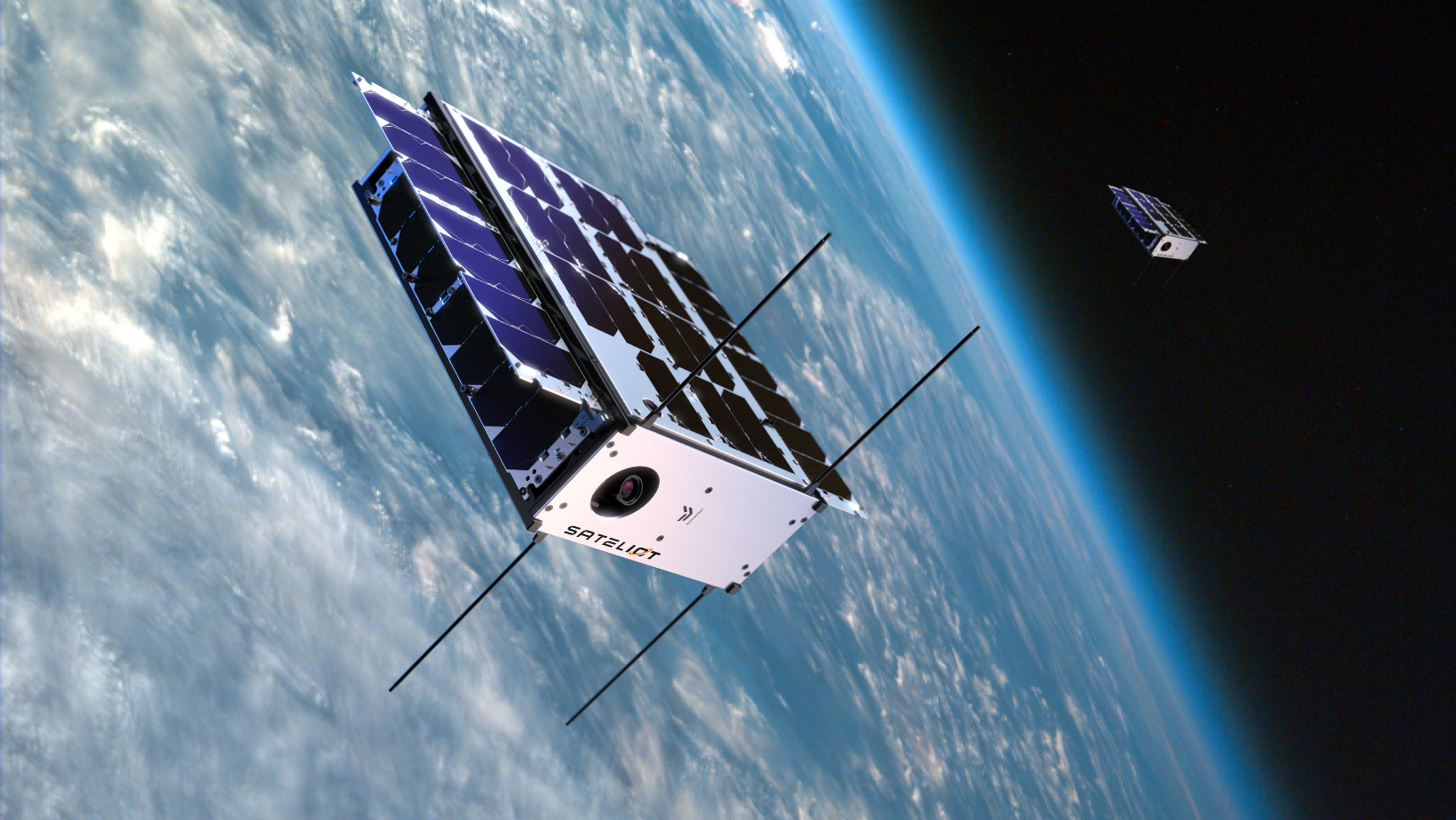SpaceX launches world's 1st 5G satellite to bring global connectivity to Internet of Things
The Sateliot "GroundBreaker" is the first of a constellation of over 250 spacecraft.

SpaceX has launched what is reportedly the first satellite in low Earth orbit (LEO) to operate on the 5G cellular standard.
Known as "The GroundBreaker," the relatively small, 22-pound (10-kilogram) orbital data relay, designated Sateliot_0, is the first of a constellation of over 250 spacecraft designed to communicate with terrestrial cell towers and fill gaps in data networks worldwide.
A Falcon 9 rocket launched the satellite on April 15 from SpaceX's launch facility at Vandenberg Space Force Base in California. Barcelona-based Sateliot, the company behind The GroundBreaker and the Sateliot_X constellation network operator, sees the technology as an opportunity for a global realization for access to the Internet of Things (IoT).
Related: What is a satellite?
"For the first time in history, cellular terrestrial telecom is merging seamlessly with satellite connectivity, and Sateliot is leading this revolution," Sateliot wrote in a statement. The company hopes to fill what it says is an 85 percent gap in mobile connectivity across the planet, and envisions applications for multiple public and private markets including road, rail, air and sea transportation, with the potential of "impacting on the efficiency of hundreds of industries."
By connecting the IoT to a cohesive network between ground and orbital cellular relays, Sateliot hopes to expand on the possibilities of connected devices. "Users can seamlessly switch from a terrestrial to a non-terrestrial 5G network, with no need to purchase any extra hardware, such as antennas or modems. Also, they can keep using their current sim cards and mobile operators, thanks to the standard roaming agreements carried out by Sateliot. This eases the way to a massive Internet of Things adoption worldwide," the company wrote in the release.
Sateliot_0 is the company's first of these satellites, but as the constellation expands, each spacecraft will orbit the Earth every 90 minutes, providing coverage areas three times the size of Texas.
Get the Space.com Newsletter
Breaking space news, the latest updates on rocket launches, skywatching events and more!
As its first satellite begins operation, Sateliot is already boasting sales over $1.3 billion.
Sateliot has not announced a launch date and vehicle for their next satellite headed to orbit, but a hint might be found on the company website's "Next Mission" page, which includes the header words, "stay tuned," and the image of a SpaceX Falcon Heavy liftoff in the background.
The number of these megaconstellations planned or under development continues to grow. Aside from SpaceX's well-known Starlink broadband satellites, the European Union and China have their own constellations in the works. Even online retailer and web services giant Amazon plans to launch its own, known as Project Kuiper, beginning in 2024.
Follow us @Spacedotcom, or on Facebook and Instagram.
Join our Space Forums to keep talking space on the latest missions, night sky and more! And if you have a news tip, correction or comment, let us know at: community@space.com.

Josh Dinner is the Staff Writer for Spaceflight at Space.com. He is a writer and photographer with a passion for science and space exploration, and has been working the space beat since 2016. Josh has covered the evolution of NASA's commercial spaceflight partnerships and crewed missions from the Space Coast, as well as NASA science missions and more. He also enjoys building 1:144-scale model rockets and human-flown spacecraft. Find some of Josh's launch photography on Instagram and his website, and follow him on X, where he mostly posts in haiku.
